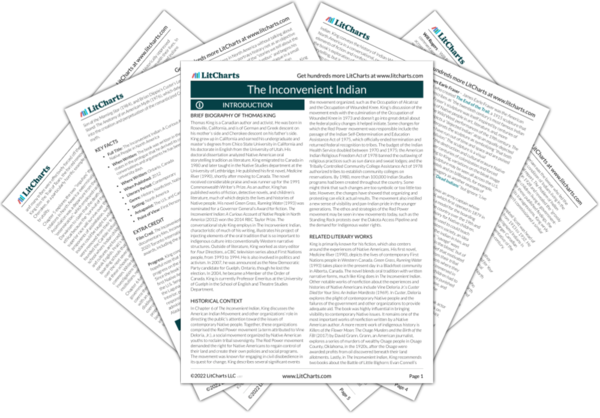King’s move to “ignore the past” is a rhetorical choice aimed at discrediting the viewpoint that Indians ought to forgive the U.S. the sins of its past. Blatchford proposes such a view in her book about the occupation of the Douglas Creek Estates, which focuses on the negative consequences the protest had on White homeowners and business owners of the area while ignoring the land claims issues that inspired the protest in the first place. King insinuates that Blatchford’s logic is faulty because ignoring the past automatically renders the protesters in the wrong, because without a past there is no justification for protest. The occupation in question is the Caledonia land dispute/Grand River land dispute, an ongoing (as of 2022) conflict between the Six Nations of the Grand River and Canada. The Six Nations are demanding compensation for leased lands and the return of stolen lands. The dispute gained widespread attention in 2006 when a group of protestors occupied Caledonia, a community within the disputed land. Shortly after, they took control of Douglas Creek Estates, the site of a future development. Protestors blocked roads and rail lines and damaged a power station, resulting in a power outage and $1 million of repairs. Violence ensued on both sides of the protest. The area’s residents sued the Government of Ontario for its failure to intervene in the occupation.
